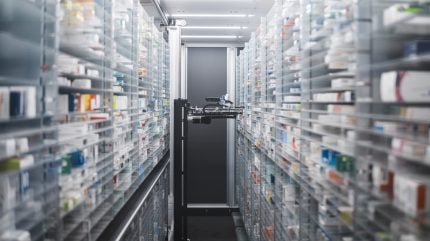
In the post-Covid-19 era, drug shortages are putting extra strain on pharmacists and patients. Pharmacists are trying to manage stock levels and process prescriptions quickly while protecting patients’ health and safety. With pharmacies getting involved in clinical trials and prescription services, pharmacists are under pressure to juggle the two and try to implement these dual demands into their workflows.
Non-traditional pharmacies, such as retailers and online alternatives, are therefore proving a growing prospect for pharmaceutical companies to stock their medications, giving consumers an accessible and reliable way to get hold of their prescriptions. Earlier this year, superstore giant Asda launched its nationwide pharmacy in the UK as retailers on both sides of the Atlantic look to plug the urgent healthcare gap.
However, Alan Hymowitz, managing director of the US M&A advisory firm Vertess, says “US retail is currently in a slump.” The reason for this, Hymowitz adds, is that “there are very small profit margins”. Previously, retailers opened locations every 48 hours for any area with a population of over 500,000. “That has stopped, and now locations are closing,” says Hymowitz.
In the US, retail chains—defined as supermarkets with a pharmacy—are the most significant pharmaceutical type, a McKinsey 1,000-person 2023 consumer survey finds, followed by grocers. Retail chains’ significance refers to the number of prescriptions they process. The consulting firm’s findings show that retail chains dispense around 138,000 prescriptions annually, equating to 50% more than grocers.
In recent years, however, US grocers’ performance in pharmaceutical sales has been inconsistent. While larger grocers have expanded through acquisitions, smaller ones have been increasingly bought out by national chains or larger grocers. Mass retail pharmacies responded by spotting the opportunity to leverage their brand recognition and size to benefit from large economies of scale.
The US retail pharmacy landscape faces saturated retail locations, ongoing labour shortages, inflationary pressures, and a steady level of generic drugs, as per McKinsey.
Pharmacies in the US are moving from dispensing only to more clinical-based services and from reactive treatment delivery to more holistic whole-person-centric care.
Convenience, choice and customer service
Retailers often have a nationwide presence, enabling them to negotiate incentive-based and small supply chain networks with health plans, pharmacy benefit managers (PBMs), and independent employers. This, in turn, helps them boost foot traffic to their stores and encourages patients to see retailers as pharmacies of convenience and choice.
Mass retailers can do this as they have the potential to set themselves apart from traditional, postal, or online pharmacies by seamlessly integrating into consumers’ daily lives. Retailers can cater to consumers’ and patients’ diverse needs. Along with collecting their prescription drugs, diabetic individuals can, for example, purchase specialised diets, glucose meters, test strips, eye vitamins, dry-mouth treatments, and skin care products from one single location.
Retailers can become a convenient one-stop shop for all health-related purchases by offering a wide range of products and services, all while consumers do their regular shopping. Overnight shipping and special discounts provide added convenience too. Maximising convenience can provide patients with busy, on-the-go healthcare and make retail pharmacies their go-to destination.
Online pharmacies take convenience up a level
In the age of convenience and speed, online pharmacies cannot be underestimated, though. To date, retail pharmacies have had the edge. Face-to-face interaction, friendly and helpful customer service, and the ability to ask questions and seek reassurance go a long way in healthcare. Online pharmacies typically lack this, opting for a minimal engagement approach between seller and patient.
Adding more personalisation to their services will prove a popular evolution of today’s online and mail-order pharmacies. A personalised experience can help maintain the speed and convenience patients want from online ordering while introducing some in-person interaction elements to match what they prefer about retail and grocery pharmacies. Online pharmacies could introduce video telehealth appointments with remote pharmacists to build a personal connection between pharmacists and patients.
While there are many online pharmacies in the US, the feeling is that they lack the necessary provisions to grow into a trusted large-scale resource. “They are unregulated and typically only accept cash payments and cannot bill insurance,” says Hymowitz. However, a change may be on the horizon. “They are starting to buy small brick-and-mortar locations around the country so they can start billing insurance,” Hymowitz adds.
Battling increasing prices
Pharmacy Benefit Managers (PBMs) have “shrunk the margins in retail so much that many independent pharmacies cannot afford to operate”, Hymowitz adds. There has been a push from pharmacies to improve PBM models by advancing the affordability of medicines and working to achieve better transparency and predictability.
In June 2023, Evernorth’s PBM business, Express Scripts, released research that highlighted how pharmacy members with employer-sponsored insurance saw around a 1% drop in out-of-pocket costs for their prescription medicines in 2023, with patients paying an average of $15.10 for 30 days’ worth of medication.
Unlike retail, online is a captive audience for pharma companies with cash. “Online will always have a presence for cash buyers,” Hymowitz said. Mark Cuban’s Cost Plus model of selling generic medications online at a considerable discount is an example of where this is in place and working effectively, Hymowitz shares.
The online pharmacy highlights how it has “no middleman”, “no price games”, and “huge drug savings”, an appealing proposition to patients in need of affordable and readily available medication. Cost-cutting capabilities have long been considered a plus of e-commerce pharmacies, removing the administrative and operational costs faced by their brick-and-mortar counterparts.
“The retail pharmacy industry is changing, and pharmacies must find new ways to stay relevant and meet consumer needs,” McKinsey said in its report on the US pharmacy of the future. Convenience and personalisation are big trends that are expected to grow. However, the ‘new’ landscape is far from just one type of pharmacy. Instead, each format and pharmacy design will have a unique strategy to become the “pharmacy of the future”. “No single approach that will work for everyone,” the report confirmed.



